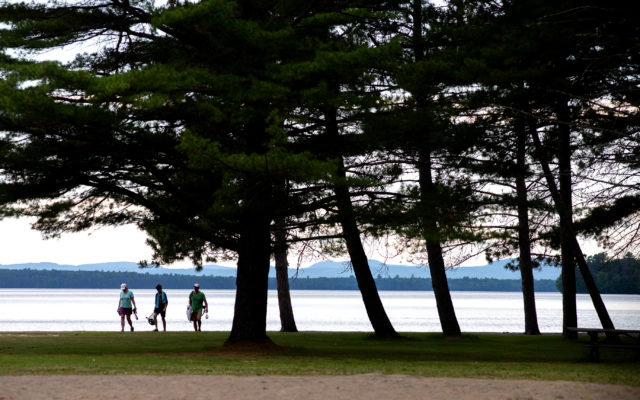
State parks see rush of ‘staycationers,’ first-time campers
It didn’t take long for Josh Palmer to appreciate the enthusiasm shared by those enjoying Maine’s great outdoors for the weekend when Peaks-Kenny State Park opened its 56 seasonal campsites in early June.
“That first couple of weekends it was pretty loud every night. We were out until past midnight just to remind people to try to be quiet,” the park manager said. “They weren’t being angry or anything. I think it was just pent up [energy].”
Visits to Maine’s state parks by residents are up by 35% so far this year compared to 2019, according to Jim Britt, spokesman for the Maine Department of Agriculture, Conservation and Forestry.
And while much of that increase is attributable to sites in the more popular southern part of the state, the trend toward “staycations” has not escaped inland parks farther north, including two in Piscataquis County.
Lily Bay State Park, a 924-acre preserve on the southeast shore of Moosehead Lake in Greenville, has seen its use for camping and day visits by Maine residents increase by 30 percent over last year so far this season.
“I would say both camping and day use have increased substantially,” said Lily Bay State Park Manager Brian Fay. “In a typical year at Lily Bay you have to close down day use because there’s no more parking available maybe once or twice a month. Just last week I had to close it down four times.
“Across the board it’s been big numbers since we opened for business, to the point where we might surpass last year’s record for usage even though we had a late start because May was not good [weather] this year.”
Fay said Lily Bay State Park experienced a 13% increase from 2019 in the use of its 93 campsites during June alone. He estimated that nearly a third of those visitors were first-time campers.
“The majority of our demographic is people who have been camping for generations as a family tradition; rarely do we get people that never camped before and are just trying it out,” Fay said. “Our target demographic for a while has been trying to get new people out, and this season has been a godsend on that front.”
Peaks-Kenny State Park, an 839-acre parcel along Sebec Lake in Dover-Foxcroft, has enjoyed similar increased use from Maine residents, with a 23 percent rise in camping and day use from 2019 so far this year.
Most of Peaks-Kenny’s heightened use has come at its campsites, in part because that park limits day use of its popular lakefront area to between 60 percent and 70 percent of capacity to ensure it does not surpass COVID-19 pandemic-related state regulations regarding crowd size and social distancing.
“Our actual numbers for day use are probably down because we’re limited, but our camping isn’t limited,” Palmer said. “Usually we have our only ‘no vacancy’ for camping on Fourth of July week and maybe a couple of times in August, but this year it’s been every weekend for five straight weeks.”
Mandated quarantines for non-residents upon their arrival in Maine since the outbreak of the COVID-19 pandemic have had an impact on the frequency of their visits to the state parks.
Non-resident visits to all Maine state parks are flat compared to 2019, as are such visits to Peaks-Kenny, Britt reported.
The story is different at Lily Bay, where its increase in resident visits has been complemented by a 20 percent rise in non-resident visits from a year ago. Fay said much of that increase has come since the quarantines were relaxed for visitors from several of Maine’s neighboring states.
“The last three weeks I’ve noticed a significant uptick in out-of-state folks coming in, especially with the mandates having changed for COVID precautions,” Fay said. “I would say we’re about 50-50 split in-state and out-of-state for campers now but I would suspect by next month it would be leaning toward out-of-state campers predominantly.”
Officials at both Lily Bay and Peaks-Kenny said their emphasis on monitoring crowd sizes, social distancing, heightened cleaning efforts and use of personal protective equipment such as face masks and face shields continues as they work to provide visitors a satisfying experience.
“I feel like that’s part of our mission in outdoor recreation. We’re here for people who want to get outside and find new ways to enjoy their vacations or their summer,” Fay said. “But it’s sort of a double-edged sword because it’s so popular yet we’re still trying to maintain those social distancing practices so we don’t have a [COVID-19] flare-up in Maine because that would ruin everything.
“It’s been a tightrope game, for sure. This has been the most stressful summer I’ve encountered.”
For more information regarding COVID-19 and the use of Maine’s state parks, visit maine.gov/dacf/covid19/parks.